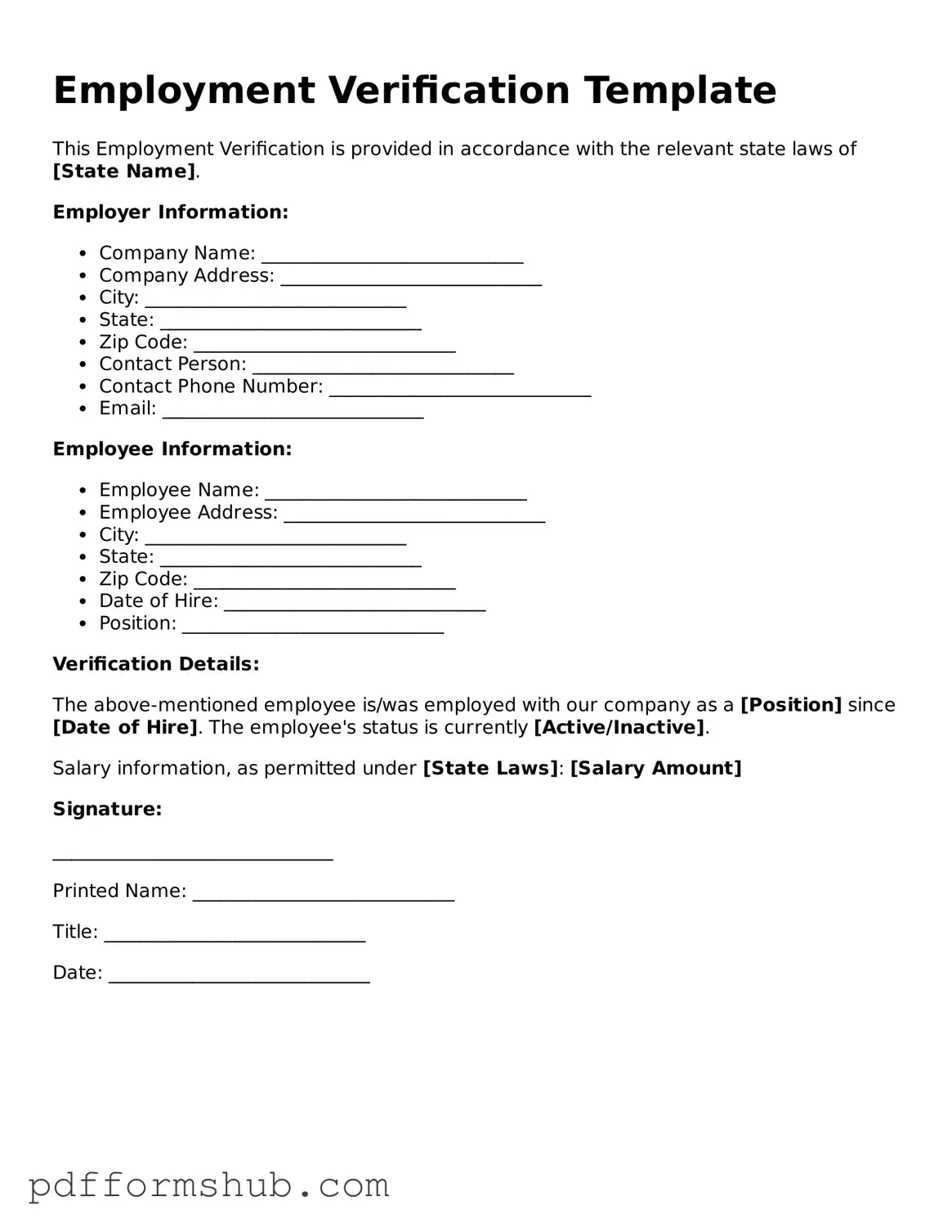When navigating the job market, understanding the Employment Verification form is essential for both employers and employees. This form serves as a critical tool in confirming a candidate’s work history, ensuring that the information provided during the hiring process is accurate and reliable. Typically, it includes details such as the applicant's previous job titles, dates of employment, and the nature of their job responsibilities. Employers often use this verification to assess a candidate’s qualifications and reliability, which can play a significant role in hiring decisions. Additionally, the form may require the submission of references or contact information for former employers, allowing for a thorough background check. By streamlining the verification process, this form not only helps maintain workplace integrity but also protects the interests of all parties involved. Understanding its components and purpose can empower job seekers to prepare effectively and help employers make informed choices.
